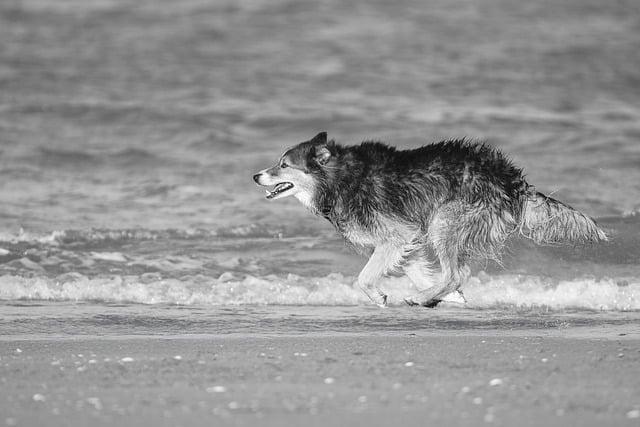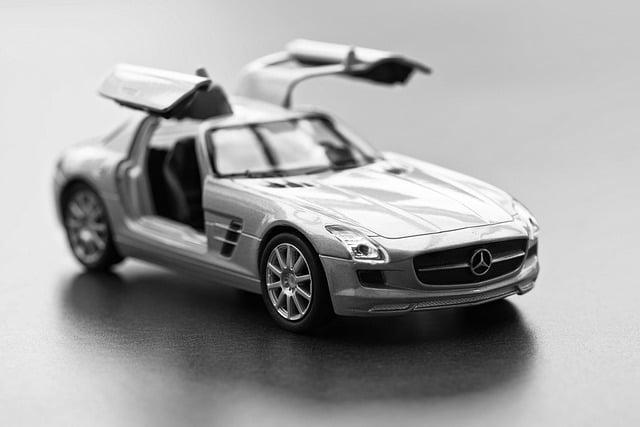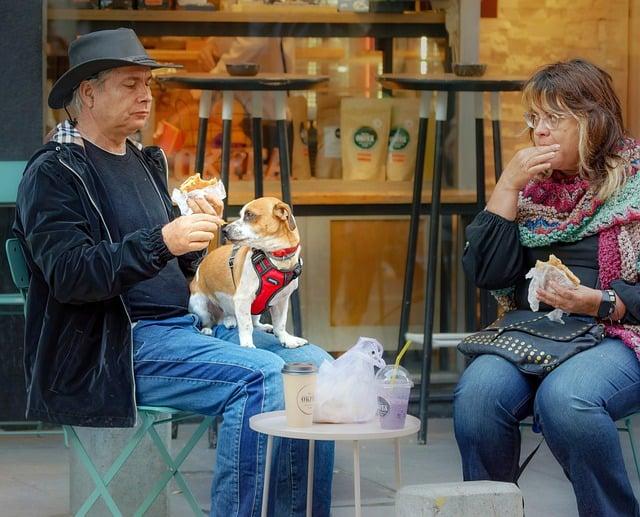Every evening, Max the golden retriever would race to his toy box, tail wagging furiously. Among the colorful chaos, one toy—a squeaky, plush rabbit—held his undivided attention. He carried it everywhere, even to bed, and would whine if it went missing. This behavior isn’t just cute; it’s a sign of attachment. Dogs can indeed become obsessed with toys, finding comfort and joy in their favorites. Understanding this bond can enhance your pet’s happiness and well-being. So, embrace that obsession—it’s a testament to your dog’s love!
Contents
- Understanding Canine Obsession with Toys and Its Implications
- Identifying Signs of Toy Obsession in Your Dog
- The Psychological Benefits of Playtime and Toy Interaction
- Effective Strategies to Manage and Balance Your Dogs Toy Affection
- Q&A
Understanding Canine Obsession with Toys and Its Implications
Canine obsession with toys is a fascinating phenomenon that can reveal much about your dog’s personality and emotional state. Dogs often form strong attachments to specific toys, which can serve as a source of comfort, entertainment, and even security. Understanding this behavior is crucial for pet owners, as it can significantly impact your dog’s overall well-being. When a dog fixates on a toy, it may indicate a need for mental stimulation or an outlet for pent-up energy.
There are several reasons why a dog might become obsessed with a particular toy. These can include:
- Instinctual Behavior: Certain toys may mimic prey, triggering a dog’s natural hunting instincts.
- Comfort and Security: A favorite toy can provide emotional support, especially during stressful situations.
- Play and Engagement: Toys that encourage interactive play can become favorites as they stimulate both physical and mental activity.
- Reinforcement: If a toy consistently leads to positive experiences, such as playtime or treats, a dog may develop an obsession.
While a strong attachment to a toy can be harmless, it’s essential to monitor the behavior for any signs of excessive obsession. If your dog becomes overly fixated, it may lead to anxiety or destructive behaviors when the toy is not available. Additionally, this obsession can interfere with social interactions, both with humans and other dogs. Therefore, it’s important to maintain a balance and encourage your dog to engage with a variety of toys and activities.
To manage and understand your dog’s toy obsession, consider implementing strategies such as:
- Rotation of Toys: Regularly change the toys available to your dog to keep their interest piqued.
- Interactive Play: Engage in play sessions that involve different toys to promote socialization and reduce fixation.
- Training and Commands: Teach your dog commands that encourage them to leave a toy or switch to another, fostering flexibility.
- Observation: Pay attention to your dog’s behavior and adjust their toy access based on their emotional responses.
Identifying Signs of Toy Obsession in Your Dog
When it comes to our furry companions, their love for toys can sometimes border on obsession. One of the first signs to look for is **constant attention** to a particular toy. If your dog carries it around everywhere, even to the bathroom or during mealtime, it may indicate a deeper attachment. This behavior can manifest as your dog refusing to engage with other toys or activities, showing a singular focus that raises a red flag.
Another telltale sign is **excessive play**. If your dog spends hours chewing, tossing, or fetching the same toy, it might be more than just playtime. Watch for signs of frustration or anxiety if the toy is taken away or if they are unable to access it. This can be particularly evident if your dog exhibits behaviors such as whining, barking, or pacing when separated from their beloved item.
Physical signs can also reveal a toy obsession. Look for **wear and tear** on the toy itself, as well as any changes in your dog’s behavior. If they become overly excited or agitated when they see the toy, or if they display possessiveness by growling or snapping when someone approaches, these are clear indicators of an unhealthy attachment. Additionally, keep an eye on any changes in your dog’s eating or sleeping habits, as these can also be influenced by their fixation on a toy.
Lastly, consider your dog’s **social interactions**. If your dog shows little interest in playing with other dogs or engaging with family members because they are preoccupied with their toy, it may be time to reassess the situation. Healthy play should involve a balance between toys and socialization. If your dog is isolating themselves or becoming increasingly reliant on their toy for comfort, it could signal an obsession that needs to be addressed for their overall well-being.
The Psychological Benefits of Playtime and Toy Interaction
Engaging in playtime with toys offers numerous psychological benefits for dogs, enhancing their overall well-being and happiness. When a dog interacts with a favorite toy, it stimulates their mind, providing a sense of purpose and fulfillment. This mental engagement can help alleviate boredom and reduce anxiety, making it essential for maintaining a balanced emotional state. Dogs that play regularly are often more relaxed and exhibit fewer behavioral issues, showcasing the importance of incorporating play into their daily routine.
Moreover, the act of playing with toys can foster a deeper bond between a dog and its owner. When you participate in play, whether through fetch, tug-of-war, or simply encouraging your dog to explore their toy, you create shared experiences that strengthen your relationship. This interaction not only builds trust but also reinforces positive behaviors, as dogs learn to associate playtime with affection and attention from their humans. The joy of play can transform a simple toy into a cherished companion, enhancing the emotional connection between you and your pet.
Additionally, toys can serve as valuable tools for socialization. When dogs engage with toys, they often exhibit behaviors that mimic natural instincts, such as hunting or retrieving. This play behavior can help them develop essential social skills, particularly when interacting with other dogs or people. By providing a variety of toys, you encourage your dog to explore different play styles, which can lead to improved confidence and adaptability in various situations.
the repetitive nature of play with a beloved toy can provide a calming effect, similar to how humans find comfort in familiar routines. Dogs often find solace in their toys, using them as a source of security during stressful times. This attachment can be particularly beneficial for dogs that experience separation anxiety or fear of loud noises. By allowing your dog to have their favorite toy close by, you can help them navigate challenging situations with greater ease and resilience.
Effective Strategies to Manage and Balance Your Dogs Toy Affection
Managing your dog’s affection for their favorite toy can be a rewarding yet challenging task. To ensure that their attachment remains healthy, consider implementing a variety of strategies that promote balance and prevent obsession. One effective approach is to **rotate toys** regularly. By introducing new toys or reintroducing old ones, you can keep your dog engaged and reduce the likelihood of them fixating on a single item. This not only stimulates their curiosity but also encourages them to explore different textures and functions.
Another strategy is to establish **playtime limits**. Setting specific times for play can help your dog learn to enjoy their toys without becoming overly attached. During these designated play sessions, engage with your dog using their favorite toy, but once the time is up, encourage them to transition to other activities. This practice teaches your dog that while toys are fun, they are just one part of a fulfilling day filled with various experiences.
Incorporating **training exercises** into playtime can also help manage your dog’s toy affection. Use their favorite toy as a reward during training sessions to reinforce positive behaviors. This not only strengthens your bond but also teaches your dog that toys are a privilege that comes with good behavior. By associating toys with training, you can create a more balanced relationship where the toy is seen as a tool for learning rather than an object of obsession.
Lastly, ensure that your dog has access to **social interactions** with both humans and other dogs. Engaging in playdates or group activities can divert their attention from toys and foster a sense of community. This socialization helps your dog understand that while toys are enjoyable, the companionship of others can be equally rewarding. By diversifying their experiences, you can cultivate a well-rounded and emotionally healthy pet who appreciates their toys without becoming overly fixated on them.
Q&A
-
Can a dog really be obsessed with a toy?
Yes, dogs can develop a strong attachment to certain toys. This obsession can stem from the toy’s texture, sound, or even the way it interacts with their play style. A favorite toy can provide comfort, entertainment, and mental stimulation, making it a significant part of your dog’s daily life.
-
What are the signs of a dog being obsessed with a toy?
Common signs include:
- Constantly carrying the toy around
- Refusing to play with other toys
- Exhibiting anxiety when the toy is out of reach
- Engaging in repetitive behaviors, such as chewing or shaking the toy
-
Is it healthy for my dog to be obsessed with a toy?
While a strong attachment to a toy can be normal, it’s essential to ensure that it doesn’t lead to behavioral issues or anxiety. Providing a variety of toys and encouraging different types of play can help maintain a healthy balance and prevent over-dependence on a single item.
-
How can I manage my dog’s obsession with a toy?
To manage your dog’s obsession:
- Rotate toys regularly to keep their interest alive
- Introduce new toys gradually
- Encourage interactive play with you or other dogs
- Monitor their behavior to ensure it remains healthy and balanced
while a dog’s obsession with a toy can be endearing, it’s essential to monitor their behavior. Ensuring a healthy balance between play and other activities will promote their overall well-being. Embrace their passion, but stay vigilant!

大家好,我是彼得潘,專業的手法身體治療師。我喜歡探索和研究各種主題,並透過與人工智慧的合作分享專業、實用、有趣的文章。我們定期進行人工審核,以確保內容的準確性。如果您發現文章中有任何不準確的地方,請隨時與我們聯繫,我們會及時糾正。您可以透過 [email protected] 與我們聯繫。



